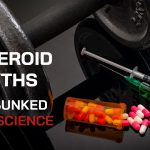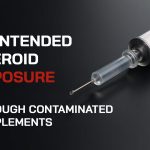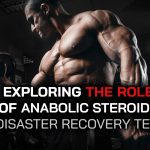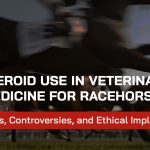Your basket is currently empty!
Category:
Dianabol (Methandrostenolone) for Bulking: Building Strength and Size
November 16th, 2024 by anabolicpointDianabol, scientifically known as methandrostenolone, is one of the most well-known anabolic steroids used for bulking purposes. Its reputation in bodybuilding circles stems from its potent muscle-building properties, rapid results, and relatively straightforward administration. Originally developed for therapeutic use, Dianabol has found a significant place in the fitness and sports world as a tool to enhance muscle mass and strength.
This article delves deep into the use of Dianabol for bulking, exploring its history, benefits, mechanisms of action, side effects, and its role in contemporary fitness. We’ll also answer some frequently asked questions to provide a comprehensive understanding of this powerful compound.
Understanding Dianabol: History and Characteristics
Dianabol was first developed in the late 1950s by Dr. John Ziegler in collaboration with pharmaceutical company Ciba. It was initially designed to help American athletes compete against their Soviet counterparts, who were reportedly using testosterone derivatives. Methandrostenolone became one of the first anabolic steroids to be marketed specifically for performance enhancement, marking a new era in sports science.
Chemically, Dianabol is a derivative of testosterone, modified to enhance its anabolic properties while minimizing androgenic effects. This balance makes it highly effective for promoting muscle growth, particularly during bulking cycles.
How Dianabol Works
Dianabol exerts its effects by mimicking the action of testosterone, the natural male sex hormone. It binds to androgen receptors in muscle tissues, initiating processes that lead to increased protein synthesis and nitrogen retention. These mechanisms are critical for muscle repair and growth, allowing users to gain significant size and strength in a short period.
Rapid Muscle Growth
One of Dianabol’s standout features is its ability to produce rapid results. Within weeks of use, users often experience substantial gains in muscle size and weight, largely due to increased water retention and muscle hypertrophy.
Enhanced Strength
Dianabol’s influence on red blood cell production improves oxygen delivery to muscles, boosting stamina and strength during intense workouts. This makes it a favorite among powerlifters and strength athletes.
Improved Recovery
By reducing muscle fatigue and accelerating recovery, Dianabol enables athletes to train more frequently and with greater intensity.
Using Dianabol for Bulking
Dianabol is most commonly used during bulking cycles, where the primary goal is to increase muscle mass and overall body weight. While it delivers impressive results, achieving optimal outcomes requires careful planning and responsible use.
Dosage and Administration
Dianabol is typically taken orally, which makes it convenient compared to injectable steroids. Standard doses for beginners range from 20-30 mg per day, while experienced users might go up to 50 mg daily.
The steroid’s half-life is relatively short (3-5 hours), so dosages are often split into multiple smaller doses throughout the day to maintain stable blood levels.
Stacking Dianabol
Dianabol is frequently stacked with other anabolic steroids to maximize bulking results. Common combinations include testosterone enanthate or deca-durabolin, as these compounds complement Dianabol’s effects and minimize certain side effects.
Diet and Training During a Dianabol Cycle
Dianabol users must follow a calorie-dense diet rich in proteins, carbohydrates, and healthy fats to support rapid muscle growth. Consistent, high-intensity training focused on compound lifts and progressive overload is also crucial for maximizing gains.
Potential Side Effects of Dianabol
While Dianabol is effective for bulking, it is not without risks. Its misuse or prolonged use can lead to significant health complications:
Estrogenic Side Effects
Dianabol’s conversion to estrogen can cause side effects like gynecomastia (male breast tissue development) and water retention. These effects may be mitigated using aromatase inhibitors or selective estrogen receptor modulators (SERMs).
Liver Toxicity
As an oral steroid, Dianabol is hepatotoxic and can strain the liver, especially when used in high doses or over extended periods. Regular liver function monitoring and the use of liver support supplements are essential.
Cardiovascular Issues
Dianabol can negatively impact cholesterol levels, increasing the risk of cardiovascular disease. A heart-healthy diet and cardiovascular exercise can help mitigate these risks.
Suppression of Natural Testosterone Production
Dianabol suppresses the body’s natural testosterone production, which can lead to testicular shrinkage, reduced libido, and fatigue. Post-cycle therapy (PCT) is necessary to restore hormonal balance.
Legal and Ethical Considerations
Dianabol is classified as a controlled substance in many countries, including the United States, where its use without a prescription is illegal. In professional sports, Dianabol and other anabolic steroids are banned under anti-doping regulations.
Recreational users must weigh the legal and ethical implications of using Dianabol, as its misuse can have consequences beyond physical health, including fines, bans, or criminal charges.
Alternatives to Dianabol
For individuals seeking muscle-building solutions without the risks associated with anabolic steroids, several alternatives are available:
- Natural Supplements: Protein powders, creatine, and amino acid formulations can support muscle growth without the side effects of steroids.
- Legal Steroid Alternatives: Some over-the-counter products claim to mimic Dianabol’s effects using natural ingredients. While their efficacy may vary, they are generally safer.
- Diet and Training Adjustments: Proper nutrition and tailored workout programs remain the foundation for sustainable muscle growth.
Frequently Asked Questions About Dianabol
1. What is Dianabol used for?
Dianabol is primarily used to enhance muscle mass and strength, making it popular among bodybuilders and strength athletes.
2. Is Dianabol legal?
In most countries, Dianabol is classified as a controlled substance, and its non-medical use is illegal.
3. How quickly does Dianabol work?
Dianabol produces noticeable results within weeks, with significant muscle and weight gains often observed during the first cycle.
4. What are the common side effects of Dianabol?
Side effects include water retention, gynecomastia, liver toxicity, cardiovascular issues, and testosterone suppression.
5. Can Dianabol cause permanent damage?
Prolonged misuse can lead to irreversible health issues, such as liver damage and cardiovascular disease.
6. How is Dianabol taken?
It is typically taken orally, with daily doses split into smaller amounts to maintain stable blood levels.
7. Do I need PCT after a Dianabol cycle?
Yes, post-cycle therapy is necessary to restore natural testosterone production and minimize side effects.
8. Can women use Dianabol?
Dianabol is generally not recommended for women due to its strong androgenic effects, which can cause masculinization.
9. What is the best way to minimize Dianabol’s side effects?
Responsible use, regular health monitoring, liver support supplements, and a proper PCT regimen can help mitigate risks.
10. Are there alternatives to Dianabol for bulking?
Yes, natural supplements, legal steroid alternatives, and tailored diet and training programs can support muscle growth without the risks of steroids.
Building Responsibly: The Balanced Approach
Dianabol remains a potent tool for those seeking rapid muscle growth and strength gains, but its use is not without significant risks. While it offers unparalleled results during bulking phases, the potential for side effects, legal complications, and ethical dilemmas must be carefully considered.
Athletes and fitness enthusiasts should prioritize long-term health and sustainable practices over short-term gains. By exploring safer alternatives, adhering to proper training protocols, and seeking professional guidance, individuals can achieve their fitness goals without compromising their well-being. In the journey toward building a stronger physique, the key lies in discipline, knowledge, and respect for the body.
Nandrolone (Deca-Durabolin) in Bodybuilding: Benefits, Risks, and Use
November 16th, 2024 by anabolicpointNandrolone, commonly known by its trade name Deca-Durabolin, is one of the most well-recognized anabolic steroids in bodybuilding. Originally developed for medical use to treat conditions like osteoporosis, anemia, and muscle-wasting diseases, nandrolone has gained immense popularity among bodybuilders for its ability to promote muscle growth, strength, and recovery.
This article delves into the role of Deca-Durabolin in bodybuilding, its benefits, the risks associated with its use, and its position in the broader context of anabolic steroids. By understanding the properties and effects of nandrolone, users and enthusiasts can make informed decisions about its role in fitness and bodybuilding.
What Is Nandrolone?
Nandrolone is an anabolic-androgenic steroid (AAS) derived from testosterone. It is structurally similar to testosterone but with slight modifications that enhance its anabolic (muscle-building) properties while reducing its androgenic (male characteristic-inducing) effects. This makes nandrolone a popular choice for those looking to maximize muscle growth with fewer androgenic side effects, such as hair loss or acne.
Deca-Durabolin, the injectable form of nandrolone, is particularly favored for its long-acting ester (nandrolone decanoate), which ensures a slow release into the bloodstream. This characteristic reduces the need for frequent injections, adding to its appeal among users.
How Does Deca-Durabolin Work in Bodybuilding?
Deca-Durabolin works by increasing nitrogen retention in muscle tissue, which is critical for protein synthesis and muscle growth. It also enhances red blood cell production, improving oxygen delivery to muscles and boosting endurance.
Another notable effect of nandrolone is its ability to increase collagen synthesis, which helps strengthen connective tissues like tendons and ligaments. This property makes it particularly attractive to bodybuilders and athletes recovering from injuries or looking to prevent joint issues during heavy training.
Benefits of Nandrolone in Bodybuilding
The popularity of Deca-Durabolin among bodybuilders stems from several key benefits:
1. Muscle Growth and Strength
Nandrolone is highly anabolic, promoting significant muscle mass and strength gains. It allows users to train harder and recover faster, making it an effective compound for bulking phases.
2. Joint and Tendon Health
One of the unique advantages of Deca-Durabolin is its positive impact on joint health. By increasing collagen synthesis and fluid retention around joints, it can alleviate pain and discomfort, allowing users to push through intense workouts.
3. Long-Lasting Effects
Due to its decanoate ester, Deca-Durabolin has a long half-life, requiring fewer injections compared to other steroids. This makes it convenient for users, particularly those new to injectable anabolic steroids.
4. Reduced Androgenic Side Effects
Compared to other anabolic steroids, nandrolone has a lower androgenic rating. This reduces the likelihood of side effects such as hair loss, severe acne, and prostate enlargement.
5. Improved Recovery
Nandrolone’s ability to enhance red blood cell production and nitrogen retention accelerates recovery from intense training sessions, allowing for consistent progress.
Common Uses of Deca-Durabolin in Bodybuilding
In bodybuilding, nandrolone is often used during bulking phases to maximize muscle and strength gains. It is frequently stacked with other steroids, such as testosterone, to counteract nandrolone’s suppressive effects on natural testosterone production.
Some bodybuilders also use low doses of Deca-Durabolin during cutting phases to maintain muscle mass and protect joints while dieting and performing intense cardio. However, its water-retention properties may limit its use for those aiming for a dry, ripped appearance.
Potential Side Effects of Nandrolone
While Deca-Durabolin offers several benefits, its use is not without risks. Misuse or prolonged use can lead to a range of side effects, including:
1. Suppression of Natural Testosterone Production
Nandrolone significantly suppresses the body’s natural testosterone production. Users often experience low libido, erectile dysfunction, and mood swings, a condition known as “Deca dick.” Combining nandrolone with testosterone can help mitigate this effect.
2. Estrogenic Side Effects
Nandrolone can convert to estradiol (a form of estrogen) in the body, leading to side effects such as water retention, gynecomastia (male breast tissue growth), and increased blood pressure. Anti-estrogen medications are often used to manage these effects.
3. Progestin-Related Side Effects
Nandrolone has progestogenic properties, which can exacerbate estrogenic effects and contribute to issues like gynecomastia, even in the presence of low estrogen levels.
4. Cardiovascular Risks
Like other anabolic steroids, nandrolone can negatively impact cholesterol levels, increasing the risk of heart disease over time.
5. Liver and Kidney Stress
Although nandrolone is less hepatotoxic than oral steroids, its use can still strain the liver and kidneys, particularly at high doses or over extended periods.
Legal and Ethical Considerations
In most countries, nandrolone is classified as a controlled substance and is available only with a prescription. Non-medical use, including for bodybuilding, is illegal and carries legal consequences.
In sports, Deca-Durabolin is banned by organizations such as the World Anti-Doping Agency (WADA). Athletes caught using nandrolone face suspensions, disqualifications, and damage to their reputations.
Alternatives to Nandrolone
For those seeking muscle-building benefits without the risks of anabolic steroids, there are alternative approaches:
- Natural Supplements: Protein powders, creatine, and branched-chain amino acids (BCAAs) support muscle growth and recovery without the side effects of steroids.
- Selective Androgen Receptor Modulators (SARMs): SARMs like LGD-4033 are designed to mimic the effects of steroids with fewer side effects, though their long-term safety is still under research.
- Training and Nutrition: A well-structured training program and balanced diet remain the foundation for achieving fitness goals naturally.
Frequently Asked Questions About Deca-Durabolin
1. What is Deca-Durabolin used for in bodybuilding?
Deca-Durabolin is primarily used to promote muscle growth, enhance strength, and improve joint health, making it a popular choice during bulking cycles.
2. How does nandrolone affect recovery?
Nandrolone accelerates recovery by increasing nitrogen retention, promoting protein synthesis, and enhancing red blood cell production.
3. What are the risks of using Deca-Durabolin?
Potential risks include testosterone suppression, estrogenic and progestin-related side effects, cardiovascular strain, and liver or kidney stress.
4. Can women use Deca-Durabolin?
While some women use Deca-Durabolin for its anabolic benefits, they risk significant virilization effects, such as deepened voice, body hair growth, and menstrual irregularities.
5. How long does nandrolone stay in the system?
Nandrolone decanoate can remain detectable in the system for up to 18 months, making it a poor choice for drug-tested athletes.
6. Is Deca-Durabolin legal?
In most countries, Deca-Durabolin is a prescription-only drug and illegal for non-medical use.
7. What is “Deca dick”?
“Deca dick” refers to erectile dysfunction caused by nandrolone’s suppression of natural testosterone production. Combining it with testosterone can mitigate this side effect.
8. Can nandrolone cause gynecomastia?
Yes, nandrolone’s estrogenic and progestin activity can contribute to gynecomastia, especially without proper management of hormone levels.
9. What is the recommended dosage for Deca-Durabolin in bodybuilding?
Dosages typically range from 200–600 mg per week, depending on experience and goals. Higher doses increase the risk of side effects.
10. Are there safer alternatives to nandrolone?
Natural supplements, SARMs, and consistent training and nutrition are safer alternatives for muscle growth and performance enhancement.
A Holistic View of Nandrolone in Bodybuilding
Nandrolone (Deca-Durabolin) has earned its place as a staple in bodybuilding for its potent anabolic effects, joint health benefits, and relatively low androgenic side effects. However, its use comes with significant health risks and ethical considerations, particularly in competitive sports.
For those considering nandrolone, understanding its effects, risks, and legal implications is essential. A balanced approach, combining informed decision-making, professional guidance, and alternative strategies, can help users achieve their goals while prioritizing health and longevity.
Testosterone Enanthate and Its Uses: A Comprehensive Guide
November 16th, 2024 by anabolicpointTestosterone enanthate is one of the most commonly used anabolic-androgenic steroids (AAS) worldwide. It is a synthetic form of testosterone, the primary male sex hormone, and plays a crucial role in various medical treatments and athletic performance enhancement. This versatile compound is primarily used to treat testosterone deficiencies but is also popular among bodybuilders and athletes seeking to improve their physical capabilities.
This article provides an in-depth exploration of testosterone enanthate, detailing its medical applications, benefits, potential side effects, and risks. It also examines the legal and ethical implications of its use, particularly in non-medical settings.
What Is Testosterone Enanthate?
Testosterone enanthate is a long-acting ester of testosterone, designed to release the hormone gradually into the bloodstream after injection. It is administered intramuscularly and has a half-life of about 4-5 days, making it suitable for weekly or bi-weekly dosing.
The ester attached to testosterone slows its release, allowing for sustained blood levels over time. This feature makes testosterone enanthate particularly effective for maintaining stable hormone levels, whether for therapeutic or performance-enhancing purposes.
Medical Uses of Testosterone Enanthate
Testosterone enanthate is primarily prescribed for men with hypogonadism, a condition in which the body produces insufficient testosterone. It is also used in other medical contexts, including:
1. Treatment of Hypogonadism
Hypogonadism can result from genetic conditions, aging, or injuries to the testes or pituitary gland. Symptoms often include fatigue, reduced libido, loss of muscle mass, and depression. Testosterone enanthate therapy restores normal testosterone levels, alleviating these symptoms and improving quality of life.
2. Delayed Puberty in Boys
In adolescent males with delayed puberty, testosterone enanthate is sometimes prescribed to stimulate the development of secondary sexual characteristics such as increased muscle mass, deeper voice, and body hair growth.
3. Gender-Affirming Hormone Therapy
For transgender men undergoing gender-affirming hormone therapy, testosterone enanthate is used to induce masculinizing effects, such as voice deepening, facial hair growth, and muscle development.
4. Catabolic States and Muscle Wasting
In certain cases, testosterone enanthate may be prescribed to counteract muscle loss caused by chronic illnesses such as HIV/AIDS or cancer.
Testosterone Enanthate in Sports and Bodybuilding
Beyond medical applications, testosterone enanthate is widely used in the fitness and athletic communities. Its anabolic effects make it a favored choice for individuals seeking enhanced muscle growth, strength, and recovery.
Muscle Growth and Strength
Testosterone enanthate increases protein synthesis and nitrogen retention in muscles, leading to significant gains in muscle size and strength. It also promotes red blood cell production, enhancing oxygen delivery to tissues during physical activity.
Recovery and Endurance
By accelerating recovery times and reducing fatigue, testosterone enanthate allows athletes to train harder and more frequently. This is particularly beneficial in sports requiring intense physical exertion.
Fat Loss
Testosterone enanthate can help reduce body fat by increasing metabolic rate and promoting lean muscle mass, creating a more defined physique.
However, the use of testosterone enanthate for non-medical purposes, including sports and bodybuilding, is often associated with risks and ethical concerns.
Side Effects and Risks
While testosterone enanthate offers numerous benefits, its use, especially in excessive doses or without medical supervision, carries potential side effects:
Physical Side Effects
- Hormonal Imbalances: Excess testosterone can lead to gynecomastia (development of breast tissue in men) and suppression of natural testosterone production.
- Skin Issues: Acne and oily skin are common, especially in individuals prone to such conditions.
- Cardiovascular Risks: Elevated cholesterol levels, increased blood pressure, and a higher risk of heart disease may result from long-term use.
- Liver Damage: Although less hepatotoxic than oral steroids, prolonged use can strain the liver.
- Male Pattern Baldness: Testosterone can accelerate hair loss in individuals genetically predisposed to baldness.
Psychological Effects
- Mood Swings: Some users experience heightened aggression, irritability, or “roid rage.”
- Dependency: Over time, users may develop psychological reliance on testosterone enanthate for physical and emotional well-being.
Legal and Ethical Concerns
The non-medical use of testosterone enanthate is banned in many sports and is illegal without a prescription in numerous countries. Violations can result in legal consequences, disqualification from competitions, and long-term reputational damage.
Administration and Dosage
For therapeutic purposes, testosterone enanthate is typically administered at doses prescribed by a healthcare provider. In medical contexts, doses may range from 50-200 mg every 1-2 weeks, depending on the condition being treated.
In non-medical settings, doses are often significantly higher, sometimes exceeding 500-1000 mg per week. These supraphysiological doses amplify the benefits but also exponentially increase the risks of side effects.
Alternatives to Testosterone Enanthate
For individuals seeking performance enhancement or muscle growth, safer alternatives to testosterone enanthate exist:
- Natural Supplements: Products containing ingredients like creatine, branched-chain amino acids (BCAAs), and whey protein can support muscle growth without hormonal manipulation.
- Exercise and Diet: Proper training programs and a balanced diet tailored to fitness goals are the safest and most sustainable methods to achieve physical transformation.
- Legal Steroid Alternatives: Some over-the-counter supplements mimic the anabolic effects of steroids without the associated risks, although their efficacy varies.
Frequently Asked Questions About Testosterone Enanthate
1. What is testosterone enanthate used for?
It is primarily used to treat testosterone deficiencies, delayed puberty, muscle wasting, and as part of gender-affirming hormone therapy for transgender men.
2. Is testosterone enanthate safe for bodybuilding?
While it is effective for muscle growth, using testosterone enanthate for bodybuilding without medical supervision can lead to significant health risks.
3. What are the side effects of testosterone enanthate?
Common side effects include acne, gynecomastia, cardiovascular issues, mood swings, and hormonal imbalances.
4. How is testosterone enanthate administered?
It is injected intramuscularly, typically once every 1-2 weeks, depending on the prescribed dosage.
5. Can testosterone enanthate cause dependency?
Yes, long-term use can lead to psychological dependency, making it difficult to stop without experiencing withdrawal symptoms.
6. What is the legal status of testosterone enanthate?
In most countries, testosterone enanthate requires a prescription and its non-medical use is illegal.
7. How long does testosterone enanthate stay in the body?
Its half-life is approximately 4-5 days, but its effects can last up to 10 days.
8. Are there alternatives to testosterone enanthate?
Yes, natural supplements, proper diet, and exercise can offer safer alternatives for enhancing performance and physique.
9. Can women use testosterone enanthate?
In specific medical conditions, women may be prescribed testosterone enanthate in low doses. However, misuse can cause masculinizing effects.
10. Is testosterone enanthate detectable in drug tests?
Yes, it can be detected in drug tests, and its use is prohibited in most competitive sports without a therapeutic exemption.
Navigating the Path to Responsible Use
Testosterone enanthate is a powerful tool for addressing medical conditions and improving quality of life when used responsibly. However, its misuse in sports and bodybuilding presents significant health risks and ethical challenges.
Understanding its effects, benefits, and potential dangers is crucial for making informed decisions. Whether used for therapeutic purposes or fitness goals, consulting a healthcare professional and prioritizing long-term health over short-term gains ensures the safest and most effective outcomes. The journey to fitness and well-being should be built on discipline, knowledge, and respect for the body’s natural processes.
Anabolic Steroids in Recreational Sports: Balancing Fitness and Risks
November 16th, 2024 by anabolicpointAnabolic steroids, also known as anabolic-androgenic steroids (AAS), have extended their reach far beyond the confines of professional athletics. Today, they are commonly used in recreational sports and fitness activities by individuals seeking to enhance their performance, appearance, or physical strength. While these substances promise rapid muscle growth and improved endurance, their use in non-professional sports comes with significant health risks, ethical concerns, and potential for dependency.
This article explores the role of anabolic steroids in recreational sports, examining their appeal, effects, and consequences. It also addresses the societal influences that perpetuate their use and provides a comprehensive discussion on how to tackle this growing issue.
The Rise of Steroid Use in Recreational Sports
Recreational sports, encompassing activities like amateur bodybuilding, fitness training, and team sports, have witnessed a steady increase in anabolic steroid use. Unlike elite athletes, recreational users often turn to steroids for aesthetic goals, such as sculpting a muscular physique, or to gain a competitive edge in informal sports settings.
The accessibility of steroids through online platforms and social networks has further fueled their popularity. Misleading advertisements and testimonials often downplay the risks, promoting a culture where quick results are prioritized over long-term health and natural progress.
Understanding Anabolic Steroids
Anabolic steroids are synthetic compounds designed to mimic the effects of testosterone, the primary male sex hormone. They promote protein synthesis within cells, leading to increased muscle growth, strength, and recovery. Medically, anabolic steroids are prescribed for conditions like delayed puberty, muscle wasting diseases, and certain hormonal disorders.
However, their non-medical use in recreational sports often involves doses far exceeding therapeutic recommendations, increasing the likelihood of adverse effects.
The Appeal of Anabolic Steroids in Recreational Sports
The allure of anabolic steroids lies in their ability to accelerate physical transformations. For recreational athletes, these substances offer a perceived shortcut to achieving fitness goals that might otherwise take years of disciplined training and proper nutrition.
Common motivations for steroid use in recreational sports include:
- Muscle Enhancement: Steroids enable users to build muscle mass rapidly, which is particularly appealing for bodybuilders and fitness enthusiasts.
- Improved Performance: For team sports or endurance activities, steroids enhance strength, stamina, and recovery, allowing participants to train harder and compete more effectively.
- Aesthetic Goals: In a culture increasingly influenced by social media, the pressure to attain an idealized physique often pushes individuals toward performance-enhancing drugs.
- Peer Influence: Friends, gym partners, or recreational leagues where steroid use is normalized can encourage others to experiment with these substances.
The Risks and Consequences of Steroid Use
While anabolic steroids may offer short-term benefits, their misuse carries significant physical, psychological, and societal risks.
Physical Health Risks
The non-medical use of anabolic steroids, particularly in high doses, can lead to severe health complications, including:
- Cardiovascular Issues: Steroids can elevate cholesterol levels, increase blood pressure, and heighten the risk of heart attack or stroke.
- Liver Damage: Oral steroids are especially toxic to the liver, potentially causing liver failure or tumors.
- Hormonal Imbalances: Long-term use disrupts the body’s natural testosterone production, leading to conditions like gynecomastia (breast development in men), infertility, and testicular shrinkage.
- Skin Problems: Severe acne and stretch marks are common among users, often resulting from rapid muscle growth.
Psychological Effects
The psychological impact of steroid use can be equally damaging. Users often report mood swings, aggression (known as “roid rage”), and heightened anxiety. Prolonged use can also result in dependency and withdrawal symptoms, including depression and fatigue, making it challenging for users to quit.
Impact on Social Dynamics
In recreational sports, steroid use undermines the principles of fair play and natural competition. It creates an uneven playing field and perpetuates unrealistic standards of fitness and performance, pressuring others to follow suit.
The Ethical Debate Surrounding Steroids in Recreational Sports
The use of anabolic steroids in recreational sports raises ethical questions about fairness, integrity, and the essence of competition. Unlike professional sports, where strict anti-doping measures are in place, recreational sports lack consistent oversight.
This absence of regulation allows steroid use to thrive unchecked, eroding the spirit of fair competition. It also creates a culture where natural achievements are undervalued, and reliance on artificial enhancements becomes normalized.
Legal and Accessibility Issues
In many countries, anabolic steroids are classified as controlled substances, making their non-medical use and distribution illegal. Despite these restrictions, the black market for steroids continues to flourish, with products often sold through unregulated online platforms.
The lack of quality control in these products poses additional risks, as users may unknowingly consume counterfeit or contaminated substances.
Addressing the Problem: Education and Awareness
Combating steroid use in recreational sports requires a comprehensive approach centered on education, support, and prevention.
Promoting Awareness
Educational initiatives targeting recreational athletes can help debunk myths about anabolic steroids and highlight their long-term consequences. Emphasizing the benefits of natural training and proper nutrition can shift the focus away from artificial enhancements.
Encouraging Open Conversations
Many recreational athletes turn to steroids out of frustration or dissatisfaction with their progress. Creating spaces where individuals can openly discuss their challenges and receive guidance from professionals can prevent the need for performance-enhancing drugs.
Enhancing Regulation
Introducing stricter regulations for supplement sales and increasing awareness about the legal consequences of steroid use can deter individuals from purchasing these substances.
Frequently Asked Questions About Anabolic Steroids in Recreational Sports
1. Why do recreational athletes use anabolic steroids?
Recreational athletes use steroids to build muscle, enhance performance, achieve aesthetic goals, or keep up with peers who use these substances.
2. Are anabolic steroids addictive?
Steroids can cause psychological dependency, as users may become reliant on their effects. Withdrawal symptoms such as depression and fatigue make quitting challenging.
3. What are the health risks of steroids for recreational users?
Risks include cardiovascular problems, liver damage, hormonal imbalances, mood swings, and increased aggression.
4. Are steroids legal for recreational use?
In most countries, the non-medical use of anabolic steroids is illegal, and possession or distribution without a prescription can lead to severe legal consequences.
5. How do steroids affect mental health?
Steroids can cause mood swings, aggression, anxiety, and depression, particularly during withdrawal.
6. What are some alternatives to steroids for muscle growth?
Natural alternatives include strength training, balanced nutrition, sufficient protein intake, and proper rest and recovery.
7. How can gyms and sports clubs discourage steroid use?
Gyms can promote natural training methods, offer educational workshops, and discourage the sale or use of illegal substances on their premises.
8. Can steroids have permanent side effects?
Yes, prolonged use can result in irreversible damage, such as liver failure, heart disease, and infertility.
9. What role does social media play in promoting steroid use?
Social media often glorifies unrealistic body standards, pushing individuals toward steroids to achieve these ideals quickly.
10. What is the best way to prevent steroid use in recreational sports?
Prevention involves education, promoting natural fitness methods, open communication, and stricter regulation of performance-enhancing drugs.
Fostering a Healthy Fitness Culture
The use of anabolic steroids in recreational sports highlights the challenges of balancing personal fitness goals with health and ethics. While these substances may offer short-term benefits, their risks far outweigh their rewards.
Building a fitness culture that values natural progress, resilience, and long-term health is essential to combat the allure of steroids. By emphasizing education, fostering open conversations, and promoting supportive environments, recreational athletes can pursue their goals without compromising their integrity or well-being. The path to true fitness lies not in shortcuts but in dedication, discipline, and self-respect.
Who Uses Anabolic Steroids: Profiles of Users and Motivations
November 16th, 2024 by anabolicpointAnabolic steroids, synthetic derivatives of testosterone, have been a topic of fascination and controversy for decades. While their medical applications are well-established, their non-medical use has garnered attention due to implications in sports, fitness, and even aesthetics. But who uses anabolic steroids, and why?
The profiles of anabolic steroid users are diverse, ranging from elite athletes and bodybuilders to individuals seeking personal transformations. Understanding the motivations, demographics, and patterns of use can help demystify this often-misunderstood subject. This article delves into the profiles of steroid users, exploring the commonalities and differences among groups, the underlying motivations, and the societal context that shapes steroid use.
Understanding Anabolic Steroid Use
Anabolic-androgenic steroids (AAS) are primarily used for their ability to enhance muscle growth, strength, and recovery. While originally developed for medical purposes, including treating delayed puberty and muscle-wasting diseases, steroids have gained popularity among those seeking physical enhancement or improved athletic performance.
The reasons for steroid use are multifaceted, influenced by cultural, psychological, and professional factors. By examining the profiles of users, it becomes evident that steroid use is not confined to a single demographic or purpose.
Profiles of Anabolic Steroid Users
1. Professional Athletes
Athletes in competitive sports are among the most scrutinized users of anabolic steroids. The pressure to excel in highly competitive environments often drives some athletes to seek a performance edge. Steroids can enhance endurance, strength, and recovery, allowing athletes to train harder and recover faster.
However, anti-doping regulations and routine testing by organizations like the World Anti-Doping Agency (WADA) have made steroid use in sports a high-risk endeavor. Despite this, historical doping scandals indicate that some athletes are willing to take these risks to secure victories or lucrative sponsorships.
2. Bodybuilders and Fitness Enthusiasts
Bodybuilders are one of the most visible groups of anabolic steroid users. In this community, the focus is on achieving extreme muscularity and low body fat, often for competitive purposes or personal satisfaction. Steroids help bodybuilders attain the size, definition, and symmetry required for success on stage.
Fitness enthusiasts, on the other hand, may use steroids to enhance their physical appearance or achieve gym-related goals. While they might not aim for the exaggerated physiques of bodybuilders, they still use steroids to gain muscle, burn fat, or improve vascularity.
3. Recreational Users
Recreational steroid users are a diverse group, often motivated by aesthetic goals rather than professional aspirations. These individuals may use steroids to achieve societal ideals of beauty, confidence, or attractiveness.
The rise of social media has amplified the desire for an idealized physique, with influencers and models often showcasing unattainable standards. This cultural pressure has contributed to the growth of recreational steroid use among both men and women.
4. Adolescents and Young Adults
Steroid use among adolescents and young adults is a growing concern. Many teenagers are influenced by peer pressure, social media, or the desire to excel in sports. They often lack awareness of the long-term health risks associated with steroids, such as hormonal imbalances and stunted growth.
Educational initiatives targeting this demographic are critical to preventing misuse and addressing the underlying pressures that lead young people to turn to steroids.
5. Medical Patients
The use of anabolic steroids in medical settings is distinct from recreational or performance-enhancing use. Patients prescribed steroids typically suffer from conditions such as delayed puberty, muscle-wasting diseases, or severe burns.
In these cases, anabolic steroids are administered under strict medical supervision to ensure safe and effective outcomes. This form of use highlights the legitimate therapeutic applications of steroids, which are often overshadowed by their misuse.
6. Older Adults
Some older adults use anabolic steroids to counteract the natural decline in testosterone levels that occurs with aging. Known as testosterone replacement therapy (TRT), this practice aims to restore vitality, improve muscle mass, and enhance quality of life.
While TRT is a medically approved treatment, some individuals self-administer steroids without professional guidance, leading to potential health risks.
7. Women
Although steroid use is more common among men, women also use anabolic steroids for various reasons, including athletic performance, bodybuilding, or personal aesthetics.
Women face unique challenges with steroid use, as the androgenic effects—such as deepening of the voice, facial hair growth, and menstrual irregularities—can be particularly pronounced. Despite these risks, the desire for a toned and muscular physique motivates some women to experiment with steroids.
Motivations Behind Steroid Use
The motivations for anabolic steroid use are as varied as the users themselves. Common drivers include:
- Performance Enhancement: Athletes and bodybuilders use steroids to gain a competitive edge, improve endurance, and accelerate recovery.
- Aesthetic Goals: Recreational users and fitness enthusiasts often seek physical transformations, aiming for muscularity, definition, or fat loss.
- Social Pressures: Cultural ideals and the influence of social media create pressure to conform to specific body standards, particularly among young people.
- Medical Needs: Patients with legitimate medical conditions rely on steroids as part of their treatment plans.
- Aging Concerns: Older adults use steroids to counteract age-related declines in muscle mass, strength, and energy levels.
Risks and Implications of Steroid Use
Anabolic steroid use carries significant health risks, particularly when used without medical supervision. These risks include:
- Hormonal Imbalances: Suppression of natural testosterone production can lead to infertility, gynecomastia, and long-term endocrine issues.
- Cardiovascular Effects: Steroids can increase blood pressure, cholesterol levels, and the risk of heart disease.
- Liver Damage: Oral steroids, in particular, are hepatotoxic and can cause liver strain or damage.
- Psychological Effects: Steroid use is associated with mood swings, aggression, and, in some cases, dependency.
- Legal and Social Consequences: In many countries, non-medical steroid use is illegal, carrying legal penalties and social stigma.
Shifting Perceptions of Steroid Use
Society’s perception of anabolic steroid use has evolved over time. While they are often associated with cheating in sports or superficial pursuits, it’s important to recognize the complexities of why individuals use steroids.
A balanced approach, emphasizing education, harm reduction, and open dialogue, is essential to addressing the risks associated with steroid use without resorting to blanket condemnation.
Frequently Asked Questions About Steroid Users
1. Who uses anabolic steroids the most?
Bodybuilders, athletes, and fitness enthusiasts are the most common users. However, recreational users, adolescents, older adults, and medical patients also use steroids for various reasons.
2. Why do people use anabolic steroids?
People use steroids to enhance athletic performance, achieve aesthetic goals, counteract aging, or treat medical conditions.
3. Are steroid users only athletes?
No, steroid users include bodybuilders, recreational fitness enthusiasts, and even non-athletes seeking physical improvements or anti-aging benefits.
4. What motivates recreational steroid users?
Recreational users are often motivated by the desire for an ideal physique, social pressures, or increased self-confidence.
5. Do women use anabolic steroids?
Yes, women use anabolic steroids for athletic performance, bodybuilding, or aesthetic purposes, but they face unique risks related to androgenic side effects.
6. How common is steroid use among teenagers?
Steroid use among teenagers is concerning, driven by peer pressure, social media influence, and the desire to excel in sports or improve appearance.
7. Is steroid use always harmful?
When used under medical supervision for legitimate purposes, steroids can be safe and effective. However, misuse or unsupervised use poses significant health risks.
8. Can older adults benefit from steroids?
Older adults may use steroids as part of testosterone replacement therapy (TRT) to counteract age-related declines in muscle mass and energy levels.
9. What are the health risks of steroid use?
Health risks include hormonal imbalances, cardiovascular issues, liver damage, psychological effects, and potential dependency.
10. How can steroid misuse be addressed?
Addressing misuse requires education, harm reduction strategies, open dialogue, and access to medical resources for users.
A Broader Perspective on Steroid Users
The profiles of anabolic steroid users are diverse, reflecting a range of motivations, demographics, and societal pressures. From elite athletes to recreational users, each group has unique reasons for turning to steroids. Understanding these profiles helps dispel stereotypes, promote informed decision-making, and encourage responsible use within a framework of education and support.
By recognizing the complexities of steroid use, society can move toward a more empathetic and balanced conversation about performance, aesthetics, and health.
Steroids in Youth Sports: Understanding the Growing Concern
November 16th, 2024 by anabolicpointThe use of anabolic steroids in youth sports is a pressing issue that has raised significant concerns among parents, coaches, and healthcare professionals. While sports are meant to encourage discipline, teamwork, and physical fitness, the increasing pressure to excel has driven some young athletes to turn to performance-enhancing drugs. Steroid use in this age group is particularly alarming due to its potential to harm both physical health and mental development.
This article delves into the reasons behind steroid use among youth athletes, its physical and psychological impacts, societal influences, and measures to address this growing problem.
The Appeal of Steroids in Youth Sports
The pressure to succeed in sports often starts at a young age. Whether from personal ambition, parental expectations, or the competitive environment, young athletes may feel compelled to gain an edge over their peers.
Anabolic steroids are synthetic derivatives of testosterone designed to promote muscle growth and enhance performance. In youth sports, their allure stems from promises of faster recovery, improved endurance, and the ability to outshine competitors. These perceived benefits, combined with a lack of awareness about long-term risks, make steroids tempting for young athletes.
The influence of role models, such as professional athletes implicated in doping scandals, further normalizes the idea of performance enhancement through artificial means. The rise of social media and its emphasis on physical aesthetics also plays a significant role, pushing some teenagers toward steroids to achieve an idealized physique.
Risks and Consequences of Steroid Use in Adolescents
The dangers of steroid use in young athletes are particularly severe due to their developing bodies. Adolescents are in a critical phase of growth, and interfering with natural hormonal processes can have long-lasting consequences.
Physical Risks
Steroid use in youth can disrupt normal growth patterns, potentially causing stunted growth by prematurely closing growth plates in bones. Other physical risks include liver damage, cardiovascular problems, and hormonal imbalances. Boys may experience reduced sperm production and testicular shrinkage, while girls risk developing masculine traits such as a deeper voice and facial hair.
Mental and Emotional Impacts
Anabolic steroids can alter brain chemistry, leading to psychological effects like aggression, mood swings, and anxiety. Known as “roid rage,” this aggression can strain relationships and lead to impulsive or dangerous behavior. Furthermore, withdrawal from steroids often results in depression, which can be particularly damaging for young individuals already navigating the emotional challenges of adolescence.
Dependency and Addiction
Though not traditionally addictive in the same way as recreational drugs, anabolic steroids can create a psychological dependency. Young athletes may become reliant on the enhanced performance and physical appearance steroids provide, making it difficult to quit despite the risks.
Societal and Cultural Pressures
The culture surrounding youth sports often contributes to the problem. With scholarships, recognition, and future professional opportunities at stake, the pressure to excel can become overwhelming. Parents and coaches, though well-intentioned, may inadvertently add to this pressure by emphasizing results over effort.
Social media further amplifies these pressures. Platforms showcasing idealized physiques and athletic achievements can create unrealistic standards for young athletes, fostering insecurity and a desire to meet these expectations at any cost.
Peer influence also plays a role. If steroid use is prevalent among teammates or competitors, young athletes may feel compelled to follow suit to remain competitive.
Recognizing Steroid Use in Young Athletes
Identifying steroid use in adolescents can be challenging, but certain signs may raise suspicion. Physical symptoms include rapid muscle growth, severe acne, and stretch marks from sudden weight gain. Behavioral changes such as increased aggression, mood swings, or secrecy around training routines and supplements may also indicate steroid use.
Parents, coaches, and healthcare professionals must remain vigilant and address concerns openly and empathetically. Early intervention is key to preventing long-term harm.
Legal and Ethical Considerations
The use of anabolic steroids without a prescription is illegal in many countries. For minors, the legal implications can extend to their parents or guardians, who may face scrutiny if they are found complicit in enabling access to these substances.
In youth sports, steroid use violates ethical standards. Fair play, integrity, and the spirit of sportsmanship are compromised when athletes resort to performance-enhancing drugs. This not only tarnishes the reputation of the individual athlete but also undermines the integrity of the sport itself.
Prevention and Education
Combating steroid use in youth sports requires a multi-faceted approach centered on education, awareness, and support.
Raising Awareness
Educational programs aimed at young athletes, parents, and coaches can help dispel myths about steroids and highlight their risks. Emphasizing the importance of natural training, nutrition, and hard work can shift the focus away from quick fixes.
Positive Role Models
Athletes who advocate for clean sports can inspire young players to pursue their goals without resorting to drugs. Promoting stories of success achieved through discipline and perseverance can counteract the influence of doping scandals.
Encouraging Open Communication
Creating a supportive environment where young athletes feel comfortable discussing their pressures and concerns is crucial. Parents and coaches should prioritize mental health and well-being over performance metrics, fostering a balanced approach to sports.
Stringent Policies
Sports organizations at all levels must enforce strict anti-doping measures, including random drug testing and clear consequences for violations. These measures deter steroid use and reinforce the importance of fair competition.
The Role of Parents and Coaches
Parents and coaches play a pivotal role in shaping young athletes’ attitudes toward sports and competition. By prioritizing character development, teamwork, and personal growth over winning at all costs, they can reduce the pressure that drives some athletes to steroids.
Encouraging balanced training, healthy eating habits, and adequate rest can help young athletes achieve their potential naturally. Additionally, being vigilant about the use of supplements and closely monitoring any sudden physical changes can prevent steroid use before it begins.
Frequently Asked Questions About Steroids in Youth Sports
1. Why do young athletes use steroids?
Young athletes may use steroids to enhance performance, improve physical appearance, or cope with competitive pressures.
2. What are the risks of steroid use for adolescents?
Risks include stunted growth, liver damage, cardiovascular issues, hormonal imbalances, and psychological effects like aggression and depression.
3. Are steroids addictive for young athletes?
While steroids are not chemically addictive, they can create psychological dependency, making it hard for users to stop.
4. How can parents identify steroid use in their children?
Signs include rapid muscle growth, severe acne, mood swings, aggression, and secrecy around training routines or supplements.
5. What legal consequences can arise from steroid use in youth sports?
Steroid use without a prescription is illegal and can lead to penalties for both the athlete and their guardians.
6. How does steroid use affect mental health?
Steroids can lead to mood swings, aggression, anxiety, and depression, particularly during withdrawal.
7. What role does social media play in steroid use among youth?
Social media creates unrealistic standards for physical appearance and athletic performance, contributing to insecurity and steroid use.
8. How can schools help prevent steroid use in sports?
Schools can implement educational programs, provide access to counselors, and enforce strict anti-doping policies.
9. What are healthier alternatives to steroids for young athletes?
Proper training, balanced nutrition, and sufficient rest are natural ways to enhance athletic performance.
10. How can coaches discourage steroid use?
Coaches can focus on personal development, promote a team-first mentality, and educate athletes about the risks of steroid use.
Building a Future of Integrity in Youth Sports
The growing issue of steroid use in youth sports highlights the need for collective action to protect young athletes’ health and integrity. By fostering a culture that values hard work, resilience, and ethical behavior over shortcuts and quick results, society can ensure that sports remain a positive force in young people’s lives.
Through education, vigilance, and supportive relationships, parents, coaches, and organizations can guide young athletes toward fulfilling their potential naturally and sustainably, ensuring that their achievements reflect genuine talent and dedication.










